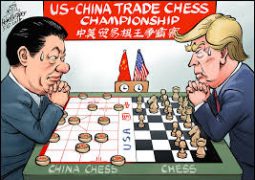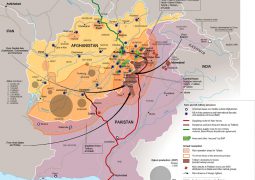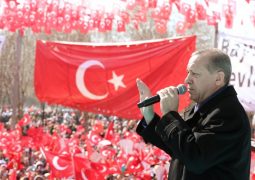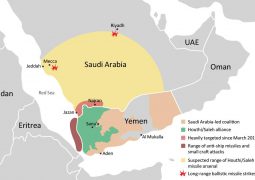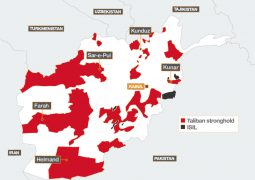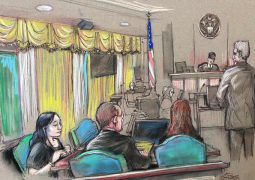As Foreign Superpower Exits Afghanistan, Insurgent Fault Lines Deepen

Taliban militants (file photo)
Michael Hughes
July 2, 2020
Today’s headlines about the ongoing U.S. exit from Afghanistan eerily resemble those published more than 30 years ago vis-à-vis the Soviet withdrawal, especially with respect to the infighting among the anti-government elements who had the most to gain by the expulsion of a foreign invader.
The Peshawar 7 mujahideen factions never really operated as one cohesive unit in the first place, although this acephalous nature had its benefits. For one, there was no head for the occupying goliath to decapitate. However, the temporary superficial bonds had a downside so adeptly captured by anthropologist Thomas Barfield.
“The last remaining thread that had bound the mujahideen into a marriage of convenience broke when they no longer had a common enemy,” Barfield in 2012 about the onset of civil war in the early 1990s that preceded the Taliban takeover. “Its leaders had no clear goals because their unity had been based on resistance against the Soviet Union and its client Afghan government, not any popular political platform.”
That last phrase is decisive. None of these groups had attracted any genuine support among the population during the decade of war against the Soviets. The mujahideen too were seen as pawns of foreign meddlers. Hence, each group decided the best strategy was to seize power first, worry about legitimacy later.
U.S. envoy to the resistance Peter Tomsensaid mujahideen clashes with other mujahideen caused more casualties than those inflicted by Najib’s forces. Two-thirds of field commanders stopped fighting the Kabul government altogether, choosing to turn the guns on each other. Afghanistan’s communist regime did not fall until 1992, thus outlasting the Soviet Union itself.
The mujahideen offspring apparently inherited the same organizational DNA. Only one of the factions appear willing to abide by the U.S.-Taliban peace agreement, which calls for dialogue with Kabul and cutting ties with terrorist groups like al-Qaeda.
According to a Pentagon released on July 1, the Taliban and al-Qaeda are still working together to upend the Afghan government, echoing accusations leveled in a UN report last month.
However, the terms of the deal are worded loosely enough to allow Washington to exit without looking back – regardless what the Taliban does or whom they hang out with.
Hence, the stage is set for a great unraveling. The insurgent movement is splintering as we speak into at least three major factions: Taliban Central (Quetta Shura), the Haqqani Network and a new splinter group linked to Iran.

Taliban Central, for its part, has pledged to honor the peace accord. \deputy leader Mohammad Yaqoob, Mullah Omar’s eldest son, not only backs the settlement process but wants to boost ties with India. That fact alone could trigger an intra-Taliban civil war.
The Haqqanis have close ties with al-Qaeda, ISIS, and Pakistan-based Jaish-e-Mohammed (JeM) – whose reason for being is to wage war on India. The Haqqani Network and Hezb-e Walayat-e Islami – a newly-hatched Iranian-linked splinter group – both believe in a military solution.
The Afghan government, for its part, is also a house divided. Ghani and Abdullah would certainly see a Taliban fracturing as a blessing, or it could simply provide a false sense of security.
The two leaders likely will never forget that while the mujahideen infighting allowed the communist regime to last, Najib eventually suffered an awful death in 1996. The Taliban tortured and castrated Najib before killing him and hanging his body from a traffic pole in front of the presidential palace.
Be that as it may, the collapse of the insurgent movement is a real possibility, especially if one looks back at a time when the Taliban were theoretically more unified than ever. Even when ruling the Taliban structure was more fragile than many realized and – at one point – was on the verge of imploding.
After 9/11 key Taliban generals and ministers – including Jalaluddin Haqqani – vowed to defect and help ex-resistance commander Abdul Haq restore the monarchy. The key to success was that the U.S. call off the bombing campaign. Of course, we know that never happened.
Haq (who was assassinated by Pakistani intelligence not long after the bombing started) warned the Americans that despite everything the Taliban did to destroy the country, Afghans will unite if the U.S. invades. Haq said Osama bin Laden and the Taliban will retreat to the mountains and hide in the very bunkers created during the Soviet occupation.
“I assure you, there is no bomb smart enough to work its way into those places,” Haq had said, although the admonitions fell on deaf ears.
UK diplomat Paddy Ashdown explained to some of Haq’s supporters why the plan was a pipe dream: “There has to first be a fireworks display… the Americans are demanding it.”
The fireworks display triggered holy war and – yet again – an uneasy yet effective ethno-sectarian-tribal alliance was forged. One minute teetering, the next prepared to slay another giant – and, now, teetering again.
- Previous General Dostum becomes third ever Afghan army marshall
- Next US Senate asks aswer frp the Wgite House on Afghan pullout



